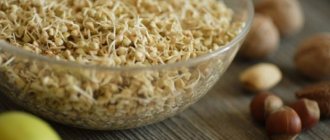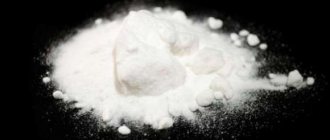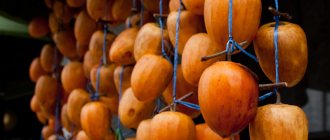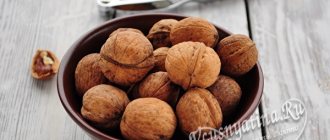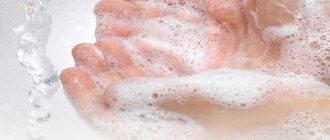One type of metal utensils is utensils made of aluminum. For many years, housewives have been using these kitchen items with pleasure. Today, such dishes have changed their appearance and properties. These are no longer those gray pots and pans familiar to us from Soviet times. Manufacturers of aluminum cookware are increasing their range, as the demand for products is not decreasing, but, on the contrary, increasing every year.
The variety of products needed in the kitchen made of aluminum is great. What the manufacturer does not produce:
- pots, pans;
- bowls, mugs;
- boilers, cauldrons;
- spoons forks;
- colanders, duck pots and much more.
It’s no wonder why this dishware is so popular among housewives.
It is light, the dish cooks faster, since the material conducts heat well. Food doesn't burn.
The manufacturer is increasing the production of aluminum cookware and expanding its range, since the material is not too expensive, is resistant to corrosion, lightweight, and has a low melting point. These properties of the metal ensure the production of inexpensive products.
Production of aluminum cookware
Depending on the manufacturing technology, dishes can be:
- stamped;
- cast.
Production of kitchen items from extruded aluminum.
- It all starts with a round blank, which will become the bottom of the future product. It is marked with the volume and name of the manufacturer.
- The workpiece is placed in the lathe opposite the blank. There is a plastic roller on it that comes into operation. The blank spins at a speed of 1000 rpm. The operation of the roller is controlled by a computer. All this is reminiscent of the work of a potter on a pottery machine. Only rotation occurs not around a vertical, but a horizontal axis.
- The machine cuts off excess aluminum and tucks in the edges.
- After the final adjustment to the desired size, another cutter cuts off the sharp edges from the rim of the future product.
Stamped ware
Stamped kitchen items are made from whole sheets of pure aluminum through the mechanical action of presses and hammers. Products are formed into simple shapes. Under the influence of extrusion and pulling, the structure of the metal is disrupted. Such dishes are light, with thin walls and bottom. Therefore, it is susceptible to deformation from high temperatures and minor impacts. The cost of such products is low.
The non-stick coating is rolled onto the aluminum blank, not onto the finished product. Therefore, during the molding process, the integrity of the structure of not only the metal, but also the non-stick coating is violated. It turns out less durable.
The production of cast dishes is more expensive. The metal does not experience any mechanical stress, as a result of which its structure is integral.
- Aluminum is poured into a mold, where it hardens in 3 minutes.
- The frozen product falls out of the mold. A hydraulic press cuts off the excess.
- After trimming off the excess, the inner walls are coated with white aluminum oxide using 6 nozzles. It improves adhesion to the non-stick coating that will be applied later.
Cast ware
It is made of high quality aluminum, which is poured into casting molds. When solidified, durable products with thick walls and bottom are obtained. The metal does not experience any mechanical stress, so the integrity of the structure is not compromised. Products made from it are more durable and strong. Not subject to deformation from high temperatures and mechanical stress.
The non-stick coating is also more durable, as it is applied to the finished product by spraying.
Such dishes keep heat for a long time, food simmers in it, and the taste of the dishes turns out different, more rich and pronounced.
Today, some manufacturers make aluminum cookware from pure metal, while others add various alloys; apply internal and external coatings.
In which pan to cook compote?
All pans can be classified according to the following parameters: volume, shape, height, diameter of the bottom and top, body thickness, material, manufacturing, availability of additional accessories (lids, mesh baskets).
When cooking compote, first of all you need to decide on the volume of the pan. If you plan to brew a drink for lunch, 3-5 liters are enough at the rate of 1 liter per person. When preparing for the winter, it is recommended to choose dishes with a volume of 10, but not more than 20 liters for convenience.
The ratio of water, fruit and sugar is determined individually, depending on the recipe and taste preferences. The volume of fruits in relation to their weight can be determined using special tables; on average, 100 g of fruit corresponds to the volume of one faceted glass.
To preserve their beneficial properties, it is recommended to throw fruits and berries into already boiling water. Take this information into account when choosing the size, remembering to leave some free space for the water to boil.
It is not advisable to place dishes with a bottom diameter noticeably smaller or larger than the diameter of the burner on electric stoves. To prevent loss of electricity, the bottom of the pan must coincide with the burner. Some electric stoves have the function of adjusting the diameter of the heating area. It simplifies the task for the housewife, but does not lose its relevance in choosing pans.
On an induction hob, it is important that the cookware covers the burner area by at least 70%. The cooker may not recognize dishes with a smaller diameter and may not turn on. And if it turns on, the flow of harmful radiation will spread to other devices and people.
In addition to the diameter of the bottom, you should also pay attention to its evenness. To work with electric and induction hobs, the bottom must be perfectly smooth. A gas stove has an advantage in this case as well; you can work on a fire with a bottom that is rounded or has become rough over time.
Typically, the larger the diameter, the wider the pan. Wide containers are convenient to use for preparing dishes that require stirring. For cooking compote, a not too wide and moderately high cylindrical pan with a bottom and top of equal diameter is suitable.
The lid needs to be tight-fitting to speed up the boiling time of the water. Ideally, it should have a hole for steam to escape and a comfortable handle that will not heat up during cooking.
It is convenient to cook compote if you have a net or basket for fruits and vegetables, like in pasta pots. You can put fruit in the mesh and then pull it out when ready if you don’t plan to leave the grounds in the drink. Inserts are included or sold separately.
A tall saucepan for compote with a stainless steel sieve is suitable for any stove and a wide variety of berries - even the smallest ones, such as currants, will not pass through the cells. If desired, you can make puree or fruit and berry sauce from the grounds.
It would be good if the manufacturer took care of putting a measuring scale on the wall. It makes it much easier to maintain proportions and allows you to see how much compote you will get. You can more accurately calculate the number of cans for blanks.
The pour spout on the body makes it easier to pour into jars and other containers, and there is less chance of spills and staining the table. A perforated insert is often made in the area of the spout, which acts as a colander, straining the compote. The thicket remains.
When choosing, pay attention to the following parameters, they will help extend the service life:
- The inner walls and bottom should not have chips, cracks, unevenness or roughness.
- The bottom must be stable and smooth.
- Additional parts (handles on the sides and lid) should be screwed and not welded. It is convenient if the surface is rubberized and does not heat up during cooking.
- Choose a pan with the thickest possible bottom and walls, this is an indicator of high quality.
- The lid should fit tightly.
Types of aluminum cookware
Speaking about the variety of aluminum cookware, about what types exist, let’s make a simple table.
| Difference parameters | Kinds |
| According to the manufacturing method. | Cast and stamped |
| By "purity" | Made from pure aluminum and with the addition of alloys, for example, duralumin. |
| According to the form. | Pots, pans, baking sheets, bowls, etc. |
| With coatings. | External and internal. |
With color coating
Many manufacturers have started producing aluminum kitchen products with color coating. They look beautiful and attractive. Methods for finishing aluminum pots and pans: anodizing (creating a protective film), applying durable enamel, varnish or painting with organic paint (acrylic or polyamide). The most common method is the application of porcelain slurry. This finishing on the outside gives the dishes an elegant look and is a protective outer layer.
- First, the product is cleaned in preparation for applying a protective layer.
- The colored coating is applied by sprayers that coat the dishes with a porcelain slurry. Porcelain is a clay-like material. Hardens when fired.
- The kiln fires porcelain at temperatures above 500 degrees.
- The intense heat transforms the porcelain into a durable, beautiful outer coating that won't burn or scratch.
- After cooling, a non-stick layer is applied to the inner walls.
Manufacturers of aluminum cookware will improve their products.
With thickened bottom
To increase their service life, they make dishes with thicker walls and double or triple bottoms. Metal refractory disks are built into it. Such kitchen items become heavier, but they are preferred when purchasing. Thickened bottom:
- prevents overheating;
- distributes heat evenly;
- prevents food from sticking to the walls and bottom.
Products with thick walls and bottom are more stable. They are less susceptible to mechanical stress.
Frying pans with grooved bottom
Another new product from aluminum cookware manufacturers is frying pans with uneven, grooved bottoms. They are called grill pans. The main difference from the usual frying pan is that the bottom is not smooth, but striped: longitudinal or transverse - corrugated. Every housewife who loves to pamper her loved ones with something delicious needs such an item. A dish cooked on a grill pan has a special taste. Reminds me of the smoke of a fire, of a picnic at the dacha. This kitchen gadget allows you to cook steaks, meat, fish, and vegetables the same way as on a grill or barbecue. The products do not lose their beneficial qualities. They come into contact with the surface of the pan only on the raised ribs. Excess fat flows into the spaces between them. Due to this, the food will not burn and will cook quickly enough.
With stone or marble coating
Today, one of the best coatings is stone. It is also called marble. This is a special development of engineers from Germany. Frying pans, saucepans, pots - this is not the entire list of stone-coated items. It consists of several layers interspersed with stone chips and a high mineral content. Made from natural stone mined in the Alpine mountains.
- The coating itself is considered safe, as it does not contain harmful substances, but consists of natural minerals.
- Manufacturers claim that their dishes are made for people who decide to lose weight. Or those who are forced to eat on a diet.
- According to experts, the cookware uses the reserves of the food itself, without requiring oil or fat. Due to this, budget savings occur.
- The guaranteed service life of such utensils is at least 15 years.
- The coating does not require additional careful care.
- Food does not burn. You can use metal accessories without fear of scratching the surface.
Utensils for the oven: how to choose the right one
The price for such dishes is high. But the quality is excellent.
Ceramic coating
It is considered environmentally friendly and safe. Made from natural materials: clay and sand. It replaced Teflon. Housewives are very fond of kitchen products.
The coating technology is complex. Silicon and chlorine compounds and various hardeners are used. It is impossible to talk about the complete safety of ceramics on aluminum cookware. You shouldn’t be scared either: the compounds of harmful substances are insignificant.
Non-stick coating
One of the first is Teflon (tetrofluoroethylene). Teflon is a white, transparent substance in a thin layer, reminiscent of paraffin or polyethylene. It, applied to the bottom of the cookware, gives it non-stick properties. Teflon is not wetted by water or grease. Withstands temperatures from minus 70 to 170 degrees. If you heat it to 300 degrees, the Teflon evaporates. This means that this non-stick coating cannot withstand high temperatures.
When heated above 160 degrees, Teflon releases perfluorooctanoic acid into the air. It can cause flu-like symptoms: headache, runny nose, nasal congestion. Doctors called this flu polymer. Perfluorooctanoic acid is a persistent compound that accumulates in the body. Negatively affects the liver, endocrine system and reproductive function. In accordance with the Stockholm Convention on Persistent Organic Compounds, PFOA has been banned from widespread use. Russia signed and ratified the convention in March 2011. Must follow its implementation. Europe has banned the use of Teflon for making cookware.
Disposable aluminum tableware
Convenient, practical, no need to wash. At first it was used only in aviation. Lunch was served to passengers in aluminum foil pans. Later it became widespread in all areas related to food and products. Manufacturers produce products that vary in shape, purpose and size. It is very convenient to use when preparing dishes in the oven. Wrap it in foil or place it in a form made from it, and the dish will not burn and will retain its beneficial qualities and taste.
Foil is safe, since microbes do not live in it. It is practical, convenient, and does not contain harmful substances. Products do not spoil longer and retain their shelf life if placed in aluminum foil or a container.
Advice. Do not store acidic foods in aluminum foil. Additional oxidation occurs, and aluminum enters the human body.
Varieties
The pros and cons of aluminum products are known. The first is lightness, lack of tendency to corrosion, the second is not suitable for microwaves and storing some products. There are several types.
Stamped
Products made from stamped aluminum are relatively inexpensive. They are made from sheets of finished metal. There are a large number of stamps, so a wide variety of types can be made. The shape of the products can be given graceful. This dish will suit any interior. It heats up quickly, but is short-lived.
Sometimes stamped products are made using forging. Metal is processed using forging presses and hammers. A stamped forged frying pan will be much stronger than a regular one.
Cast
Cast aluminum cookware is the most expensive. During its manufacture, molten raw materials are poured into molds. Thus, cast aluminum does not change its structure, which has a positive effect on its thermal conductivity and resistance to deformation.
Cast aluminum cookware is heavier than stamped aluminum cookware. It retains heat well and heats up evenly. Most often, this method is used in the manufacture of stewpans, cauldrons, and kettles. The downside is that cookware made from cast aluminum has a simple configuration; a complex shape can only be given by stamping.
Coated
The coating is applied in two ways: rolling and spraying. The first option is used for stamped dishes. The non-stick composition is applied to the sheet before production begins. Next, the product is formed. The downside is that microcracks may form on such a coating.
A more reliable option would be spraying. Ready-made dishes are processed in this way. It is suitable for cast and forged products. The more layers of coating, the better.
Colored
Aluminum products with color coating are more attractive in appearance. Finishing is applied in several ways. For example:
- create a protective film;
- apply enamel, varnish;
- painted with organic paint.
Lately, stores have been filled with dishes coated with porcelain slurry. It looks beautiful on the outside and is also a good protective layer.
Stone/marble
Such a coating is practical if it contains minerals. Refers to the Teflon version with marble chips, applied in several layers. Good quality cookware can last over 20 years. This coating cools slowly and is difficult to scratch. The downside is the excess weight of the resulting product.
An excellent option would be models with a metal thickness of 6 and with 5 layers of coating. You can cook in these pans without oil. Only periodically it should be wiped with a napkin or greased.
Ceramic
Ceramic coating of aluminum cookware has become an excellent replacement for Teflon coating. Thanks to aluminum, pans, frying pans and other utensils are light, and ceramics increase their service life and have a non-stick property. During manufacturing, several layers are applied, top and bottom.
The advantages of such cookware are the ability to withstand high temperatures, uniform heat distribution, and resistance to damage and scratches. Disadvantages of ceramics: afraid of sudden temperature changes, not suitable for induction cookers and hobs.
Advantages and disadvantages
The main thing is to follow the operating rules.
Aluminum cookware today is no longer the same as what we remember in our grandmothers' kitchens. Previously, pots and pans were made of pure aluminum, and there may have been a risk of metal entering the body if the rules of use were violated. Thanks to external and internal coatings, aluminum kitchen utensils prevent direct contact of food with metal.
| Advantages | Flaws |
| Low cost | Do not cook foods containing acids. |
| High thermal conductivity. Saves cooking time. | It is not recommended to store food. |
| Corrosion resistant. | |
| It does not require special care. | |
| Light in weight, even if large in size. | |
| Attractive appearance. | |
| Food does not stick or burn. | |
| Designed for cooking. |
As can be seen from the table, there are some advantages.
What alloys are used to make cookware?
Only food grade aluminum is used in production. This is a fairly soft metal, so magnesium or silicon is added to the alloy to increase its strength. But these are not the only components.
The relevant GOSTs regulate a certain set of chemicals that may be present in the raw materials for the production of aluminum cookware:
- lead – 0.15%;
- beryllium – 0.0005%;
- zinc – 0.3%;
- arsenic – 0.015%;
Copper and Magrane are also used as gelling additives. They increase the ductility and heat resistance of the base material. Aluminum without impurities has a low heat capacity and high thermal conductivity. When heated, it practically does not deform and is resistant to temperature changes.
This is the best material for the production of large-volume products, with a relief surface, and all kinds of complex shapes. Most often made from aluminum:
- baking dishes;
- pots;
- ducklings;
- bowls;
- frying pans;
- stewpans;
- buckets;
- basins;
- colanders;
- cutlery (forks, spoons).
Casting and stamping are the main techniques for making aluminum cookware. Stamped products are made from sheet metal, which is given the required shape using presses. This is how you get large pots and basins. Die-cast models are more expensive. To make them, they take aluminum ingots, straighten them and pour them into molds.
Casting as a production method has its advantages. Aluminum and various impurities do not change the structure. As a result, objects made of cast metal are heated equally over the entire surface and retain heat for a long time in comparison with stamped ones. Most often, casting is used to make frying pans, pots and pots with thick walls.
Is there any harm
Several years ago, there were a huge number of horror stories about the dangers of aluminum on the human body. According to experts in the field, one should be skeptical. There are no dangerous substances, they say, but only dangerous doses. The amount of aluminum dangerous to the human body, its health and vital functions must exceed 50 mg per day. But with food, medicine and water, a person does not eat as much metal. For comparison: sour cabbage soup, after standing for a week in an aluminum pan, absorbed no more than 3 mg. A person can eat up to 40 mg of aluminum without harm to health.
People with Alzheimer's disease have been found to have large amounts of aluminum in their body cells. But the connection between the disease and the presence of the metal in the body has not been established. The disease has nothing to do with aluminum pans and pots. Clinical trials on whether aluminum cookware is harmful to the development of Alzheimer's disease have not been confirmed.
In the late 90s, the World Medical Organization issued a report stating that aluminum is not a carcinogen and cannot cause cancer. This means that the statement about the dangers of aluminum cookware is erroneous. And the kitchen products themselves are no longer the same as before. Various metal coatings on the outside and inside prevent direct contact with aluminum.
How aluminum affects the body's functioning
- It turned out that aluminum changes the energy exchange in cells, and this leads to their uncontrolled reproduction. And chaotic cell proliferation leads to the formation of tumors. It can also accumulate in the body, which ultimately leads to serious consequences. There are many such consequences.
- Excess aluminum disrupts a serious function of our body - metabolism. In addition, it negatively affects the nervous system, removes calcium from the body, interferes with hemoglobin synthesis and causes bone damage. Aluminum poisoning leads to the development of osteoporosis and impaired renal function.
It is especially dangerous to expose children to aluminum. This affects them with increased excitability and hyperactivity, and sometimes leads to headaches, anemia, kidney and liver diseases.
- Aluminum also has an extremely unpleasant effect on older people: it causes memory loss and develops dementia. Some studies have even found a link between excess aluminum and Alzheimer's disease. True, the last hypothesis was subsequently refuted, although some scientists continue to believe in it.
What can you cook?
It is inappropriate to talk about categorical prohibitions on the use of aluminum pans. But it is better not to cook individual dishes in it, which can ruin the appearance and shorten the shelf life.
Do not cook acidic or alkaline foods in aluminum pans, such as sour cabbage soup, compotes, sauces, marinades, vegetables: potatoes, beets; baby and dietary food. The acid and alkali contained in such products destroy the protective oxide layer, resulting in aluminum oxide in the form of a dark coating. Aluminum hydroxide may form, which is toxic.
You cannot collect sour berries in such a container, for example, cranberries. Since it contains a lot of acid, and it destroys the protective film, the metal comes into contact with the product and enriches it with itself. A high concentration of aluminum in berries is harmful to the body.
Aluminum pans are considered indispensable when preparing side dishes from cereals, pasta, and potatoes. These dishes do not burn and do not damage the dishes.
Is it possible to make jam?
There is no clear answer. When cooking preserves, jams, marmalade, the berries are covered with granulated sugar until the juice appears. It releases acid, which is known to destroy the protective film of an aluminum pan, and the metal comes into contact with the product. The jam is cooked in 2 or even 3 steps. It turns out that the product comes into contact with aluminum for a long time, and the jam absorbs the metal. Therefore, it is better not to use an aluminum pan for making jam. If this concerns five-minute jam, then you can cook it and immediately transfer it to jars. But, if you cook it several times, it is advisable not to use aluminum cookware.
Cookware for induction cookers: which one is suitable, how to choose
Advice. Do not cook jam in an aluminum pan.
An enamel pan without chips or scratches is the most suitable option for making jam. The main thing is to stir often so as not to burn.
Selection and storage of aluminum cookware
When choosing aluminum cookware, pay attention to the method of its manufacture. Cast kitchen utensils are in most cases thick-walled. Unlike stamped products, they are less susceptible to damage.
The surface of metal utensils is coated with a thin film of aluminum oxide. It prevents oxidation reactions with some products. But if the protective film is damaged, the metal can penetrate into the food. To prevent this, you can choose kitchen utensils with ceramic or non-stick coatings.
Is it possible to store food
The debate about the use of aluminum cookware continues to this day. But no evidence has been found that aluminum is the culprit in many human diseases. As they say: “God protects those who are careful.” We must show moderation in everything. Cooking in an aluminum pan is one thing, but storing food is something completely different.
We prepared food in an aluminum container and transferred it to another. Even if suddenly the metal managed to enter into a chemical reaction with the product, when the food was transferred, the reaction stopped. What happens when food is stored in aluminum containers for a long time. What happens is the continuation of the reaction of the metal with the product. That is, the concentration of aluminum in food increases significantly. Then the product becomes toxic, and a person can actually get poisoned.
If you follow the rules for using aluminum products and with proper care, the metal does not combine with the product. But there is hardly a housewife who takes all precautions.
Important. Do not store food in an aluminum pan.
Why you can’t pick berries in aluminum dishes
For this purpose, take another container, preferably enameled. During the picking process, the berries begin to press on each other. The fuller the bowl, the greater the pressure. The berries may be damaged by their own weight. The acid contained in them is released with greater force. It destroys the aluminum oxide film. The metal is very active. It immediately enters into a chemical reaction with the berries and passes into them. If the berry picking process is delayed, the aluminum concentration may be high. This is fraught with poisoning.
Why you can’t store alkaline and acidic solutions
As is known, salts, acids and alkalis destroy the oxide film. To avoid large amounts of aluminum getting into the product and then into the human body, it is better not to store such solutions in an aluminum container. If you have already cooked sour cabbage soup or compote in an aluminum pan, then immediately pour it into an enamel bowl after cooking. This will minimize the risk of metal entering the body.
What is it used for?
Aluminum cookware is lightweight, so it is perfect for boiling water and preparing non-acidic dishes. But you shouldn’t ferment, salt fish or make a marinade.
Cooking
You can cook in aluminum cookware without harm to your health:
- Pasta – they cook well and do not stick to the bottom;
- All vegetables have a neutral taste;
- Lean meat;
- Fish - it can only be boiled, fried, stewed. You cannot use aluminum utensils for salting;
- Cereals – you can cook various cereals.
You should not leave already prepared food. After cooking, it should be transferred to a more suitable container. Another confirmation of why you can safely use utensils made from this metal is that food-grade aluminum is used in the production of geyser coffee makers. It is also used to make army flasks, cauldrons, and is useful for kitchen production, for example, foil for baking. You can safely drink milk, water and coffee from aluminum mugs.
Next, we’ll figure out what can be cooked in a thick-walled aluminum frying pan. These dishes include:
- Fried potatoes;
- Stewed or sautéed vegetables.
As is the case with non-stick frying pans, you should mix food with a spatula made of wood, plastic or silicone. It will help avoid scratches and preserve the beautiful appearance of the product for many years.
There is also a list of foods that cannot be cooked in aluminum cookware. You should use pots and pans made of other materials if you decide:
- Prepare meat dishes with sweet and sour sauce;
- Stew sour or pickled vegetables;
- Cook tomato sauces or fruit compotes;
- Prepare dietary meals and meals for children.
It is not suitable for making cabbage soup, jelly and jam. Products that contain sulfur and calcium can leave dark stains on the walls of dishes. This includes dairy products, pickles and eggs.
Storage
Is aluminum cookware harmful if used for storage? Let's find out. In some cases, yes. Everything here will depend on the quality of the product. Of course, if food is stored in an old frying pan with scratches, then aluminum cookware will be harmful to health. You cannot store food in unventilated containers with poor-quality protective coating.
If the frying pan has a non-stick coating, then there are practically no storage restrictions. It is useful to periodically inspect the dishes. The main thing is that it is not scratched or damaged in any other way. If there is still damage, even minor, then it is better to use another container for storage.
High-quality saucepans are harmful if you store cabbage soup, pickle soup, hodgepodge, vinegar marinades, compotes or jam in them. If you want to marinate meat, it is better to choose a different container for this. The same goes for salads dressed with vinegar, lemon juice or mayonnaise. This is explained by the fact that under the influence of an acidic environment the metal oxidizes and it begins to produce substances that are dangerous to humans. Also, do not store milk, as this will cause it to acquire an unpleasant aftertaste.
Food in aluminum containers can only be stored in the refrigerator if you are completely sure of its quality. Such utensils must have verified manufacturers, certificates and safety marks.
Operating rules
Follow the basic rules for handling aluminum cookware.
- Do not wash dishes with hard sponges or abrasive cleaning agents.
- Use only for cooking and do not store food.
- Wash immediately after use.
- Do not cook foods containing acids.
How to prepare for first use
Before using a new aluminum pan or frying pan, prepare it properly for use. There are many methods for preparing dishes for use.
- Wash with hot water using laundry soap or detergent such as Feri or AOC, wipe dry.
- If it's a saucepan, fill it with water, boil it and drain the water. If dark spots form on the wall, wipe them with a cotton swab dipped in a solution of vinegar and water in a 1:1 ratio.
- If you are preparing a frying pan, bake it after washing and wiping it. To do this, pour in vegetable oil to cover the bottom. Add 1 tablespoon of salt and heat over low heat for 10-15 minutes until black smoke appears.
- Let cool, drain and rinse thoroughly with hot water without using detergents.
- Can be calcined without oil or salt.
Grease the pan on both sides with a cotton swab dipped in vegetable oil. Place the frying pan upside down in an oven preheated to 180 degrees and heat for an hour. After cooling, rinse with hot water.
Important. These preparation methods apply to aluminum cookware without ceramic or stone coatings. It is enough to wash them with warm water and laundry soap or detergent.
Can I put it in the microwave or oven?
You can cook in the oven in an aluminum pan. Even bake Easter cakes. But there is no need to store food after cooking; it is better to pour or pour the cooked dish into an enamel bowl.
Aluminum frying pans, if the handle is removed, can also be used for stewing and baking in the oven.
Important. Do not place any metal products in the microwave oven.
This means that aluminum products cannot be placed in a microwave oven.
Use on induction hob
Aluminum cookware is not suitable for induction cookers. The main indicator for use is the ability to magnetize. Aluminum does not have this feature.
Although there are so many new products in stores. Manufacturers make dishes with bottoms from various alloys. It is better to read the instructions or consult with the seller before purchasing.
Choosing a pan based on the material
Depending on the material, pans for preparing compote can be made of aluminum, enameled, cast iron, glass, or stainless steel. Each material has its pros and cons, but not everyone can be recommended for cooking fruits and berries.
Enameled carbon steel pans are ideal for cooking compote for the winter and for quick consumption. They are durable and hygienic. The enamel is resistant to oxidation, so the compote can be safely left in the same container in the refrigerator. Fruit acids will also not damage the walls, thanks to the coating.
There are also disadvantages. It is not recommended to use enamel cookware if chips and cracks are detected. In this case, metal salts will penetrate into the products. To extend service life, you need to avoid impacts, cleaning with abrasive particles and hard sponges, and avoid sudden temperature changes.
When choosing, keep in mind that manufacturers use two methods for enamel coating: spraying or dipping. When sprayed, the protective layer is thin and short-lived. It is better to buy a saucepan for compote, coated with enamel using the dipping method.
It is easy to understand that the dishes are coated with enamel using the dipping method. There will be 2 or 4 black dots on the outer surface, these are the contact points of the dipping fasteners. Knowing this feature, you will not be deceived by unscrupulous sellers.
Bottom thickness: at least 4 mm. The interior coating should be white, black or beige; additional dyes used for coloring are toxic.
Stainless steel pans are not inferior to enameled ones when it comes to cooking compote, and in some ways they are superior to them. They are practical, durable, and are not afraid of impacts and cleaning with abrasive substances. You can store finished products for a long time. When heated, heavy metal salts are not released.
In stainless steel pans you can cook compote from any fruit, berries, dried fruit. Even if it's sour currants or tender raspberries. Oxidation is excluded. Stainless steel does not crack due to temperature changes and does not rust.
A high-quality stainless steel pan should have a bottom thickness of 4 mm and a wall thickness of 0.5-1 cm. The thickened bottom and walls evenly distribute and accumulate heat. Read about choosing a good pan in our other article.
The disadvantages include the high cost (the thicker the bottom and walls, the higher the price). Over time, stainless steel darkens and permanent stains may appear, causing the appearance to become unpresentable.
Stamped aluminum cookware is lightweight, inexpensive, and heats up quickly. But not every aluminum pan is suitable for fruits and berries. It is important here that the alloy is of high quality. With prolonged interaction with fruit acids, aluminum begins to oxidize.
However, you can cook compote in aluminum pans if they are fruits and berries with low acidity. We have already talked about far-fetched fears in the instructions for choosing utensils for making jam. In addition, cooking lasts several minutes, during which oxidation simply does not have time to occur.
The main thing is not to leave the compote in the bowl, but to immediately pour it into a jug or pour it into jars. If you have a protective coating: Teflon, ceramic, stone or titanium, then you can also safely cook compote from dried fruits or fresh fruits and berries.
Cast iron is prone to rust. When interacting with sour fruits and berries, the walls may oxidize. During the cooking process, all the fat from the pores will go into the compote, and the non-stick coating will be damaged. You can only use non-stick cast iron pans if nothing else is available.
Glassware itself is safe and inert, but in this segment the volumes do not exceed 3.5-4 liters. You can choose to prepare compotes in small quantities, but for winter preparations you will have to look for another option.
You can buy a pot for compote in an online store or in a shopping center in your city. It is more profitable to make such purchases on sales days. But in this case, don’t delay; in the midst of preparations, discounts are rarer. If you like to make healthy juices, then read the instructions for choosing a juicer.
Aluminum cookware has been in demand for decades. It can be found in every kitchen. Kitchen utensils made from this metal attract a large number of housewives, because such products are light and inexpensive, and food is prepared quickly in them.
Despite the advantages of aluminum cookware, there have been rumors for many years that this metal is harmful to human health. Particularly impressionable people claim that it causes Alzheimer's disease.
Are aluminum kitchen utensils really hazardous to health? What are its pros and cons?
Caring for aluminum cookware
If you use and care for aluminum cookware every day, it is not difficult to keep it clean.
Universal advice
To prevent pots and pans from deteriorating over time, it is better to wash them immediately after cooking. The only condition is to let it cool. If a drop of cold water falls on a hot frying pan, the pan may become deformed.
When the pan is washed immediately, no special effort is required. For washing, use warm water and mustard powder instead of chemicals. If it doesn’t work right away, and the leftover food has already dried, then fill the dishes with warm water with the addition of laundry soap or detergents and leave for 1 hour. Contaminants can be easily washed off.
How to remove blackness
With the onset of warm days, who doesn’t like to relax outside the city in nature. Smoke from the fire, barbecue, hot tea. Or fishing, fish soup, which is also cooked over a fire. Aluminum pots, saucepans, and kettles turn black after a fire. Don't be alarmed. It is not difficult to clean it. Wine vinegar or citric acid will help.
- Use a cloth soaked in vinegar or citric acid to rub the outside of the dishes and rinse thoroughly with warm water.
- If blackness has formed inside the dish, pour warm water into it, add 7-8 tablespoons of wine vinegar or squeeze out lemon juice, as much as you like.
- Boil, let cool. Drain the solution.
- Rinse with warm water using a soft sponge.
Folk remedies for washing dishes - benefits, savings or a waste of time
The dishes will become clean again.
Using hard scourers for cleaning
Under no circumstances should you clean aluminum cookware with hard sponges, much less steel or iron ones.
Firstly, they destroy the protective film of aluminum cookware, which prevents metal from getting into the food.
Secondly, hard washcloths leave wide scratches into which dirt will subsequently get clogged. It is almost impossible to wash it there.
How to clean pots and pans from burning and grease
If the dishes are very dirty and you are sorry to part with them, then use the advice on how to clean a pot or frying pan from burning and grease.
- Fill a large container with water.
- Grate or cut with a knife 1 piece of laundry soap. Pour in 300 grams of silicate glue.
- Bring the solution to a boil and place the dishes that need to be cleaned there.
- Boil over low heat with the lid closed for 1 hour.
- Remove the product from the container, being careful not to burn yourself. A soft flannel cloth or sponge can easily remove grease and carbon deposits.
- Rinse thoroughly with water.
After such a bath, your pots and pans will thank you.
How to remove scale from an aluminum surface
Using the same method that was used to remove burning and grease, you can remove scale. In addition, ammonia or vinegar will help remove it.
Dilute 8-11 drops of ammonia in a small amount of water, rub with 1/3 of a piece of laundry soap. This solution will remove a small layer of scale.
- Pour water and 5-6 tablespoons of vinegar into the container you want to descale,
- Boil the water for 10 minutes.
- Drain and rinse thoroughly with warm water.
It is not recommended to wash aluminum products in the dishwasher. They lose their shine.
How to restore shine to dishes
If your aluminum kitchen items have lost their shine and darkened, these tips will help you restore their shiny appearance.
- If it darkens inside, pour in kefir or sour milk and leave for 30-40 minutes. Rinse with warm water. Lemon or apple juice will help prevent darkening on the outside. Rub half a lemon or sour apple onto the darkened walls, leave for 1 - 3 hours and rinse with warm water.
- Instead of fruit juice, you can use 6 - 9% vinegar. The technology is the same.
- Cut the onion into several pieces, place in a bowl, add water and boil for 10 minutes.
- Rub the wetted surface with tooth powder and leave for 11 hours. Rinse thoroughly with warm water.
Your dishes will shine like new.
Cleansing with soda and sand
It is not recommended to clean aluminum cookware with these products. Aluminum is a soft metal. Soda contains alkali, and it is detrimental to the protective film. Soda will destroy it completely.
Sand in its structure consists of small particles. If you clean an aluminum surface with sand, it will leave scratches, not too big, but deep. Then dirt will get clogged there. In addition, the protective film in places of scratches will not be restored.
Advice. Do not use baking soda or sand to clean aluminum products.
Removing dark plaque
If the rules for using aluminum cookware are violated, dark spots and stains appear on its walls. Apparently, jacket potatoes, beets, and sour cabbage soup were cooked in the saucepan. It is unpleasant to use such utensils. How can I return it to its previous appearance? Regular onions will help remove this nuisance.
- Take 2 medium-sized onions and place them in the container you want to peel.
- Pour water and boil for half an hour.
Grate the laundry soap, add water and boil for 20-25 minutes.
After all procedures, thoroughly rinse the dishes with warm water and wipe dry.
Try to clean off dark spots on the walls that are not too old with an apple or lemon.
Cut the fruit in half and rub the halves into the dark areas. After this, rinse with warm water and dry.
Removing Burnt Food
To prevent food from burning, the housewife must control the cooking process, stir in time and ensure that the food does not “run away”. Then you won’t need any effort to wash the pot or pan. If it turns out that for some reason the hostess didn’t pay attention, and the food managed to burn, then don’t panic. Salt will deal with the remains of burnt food.
- Soak the pan - pour cool water into it and leave for a while.
- Drain the water and add as much salt as you like. Leave for 3-4 hours.
- Clean with a soft sponge and rinse with warm water.
If milk is burnt, activated carbon is effective.
- Grind 10 tablets into powder, pour into the bottom of the dish and leave for 1 hour.
- Pour in cool water and let the solution sit for another 30-40 minutes.
- Wash the pan with regular dishwashing detergent. Will wash off easily.
The main rule that must be followed is that if food is burnt, do not put off cleaning until later.

